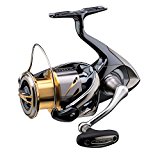Lake Trout Habitat
Trout are found all over the world from North America, to Europe and into Asia. They’ve even been introduced into New Zealand and Australia.
However Lake Trout in comparison are quite rare. Lake Trout are native to the the northern United States, most of Canada and the Arctic.
Although they have been introduced to South America and Europe in limited numbers, a bulk of the population is located in Canada and the largest Lake Trout found are in Canada and the Arctic, including Alaska.
To put that into perspective, it’s estimated that 25% of the world population of Lake Trout live in Ontario, Canada. Ontario is the most populous province and is about 11% of the country’s land mass. However, that 25 percent is located in only 1% of the provinces lakes.
Lake Trout are found in deep, cold water lakes, most of which are large and capable of sustaining a large population of bait fish and other species. In these large lakes, the Lake Trout grow large.
You’ll also find them in shallow lakes as well as deep rivers as is the case in Nunavut and the Northwest Territories where many of the Tundra lakes are shallow.
Like other Charr, Lake Trout spawn in the fall in the months of September and October. They prefer gravel, pebble or pretty much any rocky bottom. The depth of spawning varies greatly based on their distribution and body of water.
In most lakes, Lake Trout are usually found in 40 feet/12 meters or less. In large deep lakes like the great lakes, they can spawn at 360 feet/120 meters or less. However in northern arctic lakes, they are known to spawn in water no deeper than 1 foot/30 cm.
Commercial Lake Trout Fishing
Lake trout commercial fishing was a viable business until the late 1930’s when Sea Lamprey was introduced into the Great Lakes, which decimated the population.
A combination of the Sea Lamprey and over-fishing reduced the population varieties from 13 down to 3 and left the population a fraction of what is was prior to the introduction of the Sea Lamprey.


